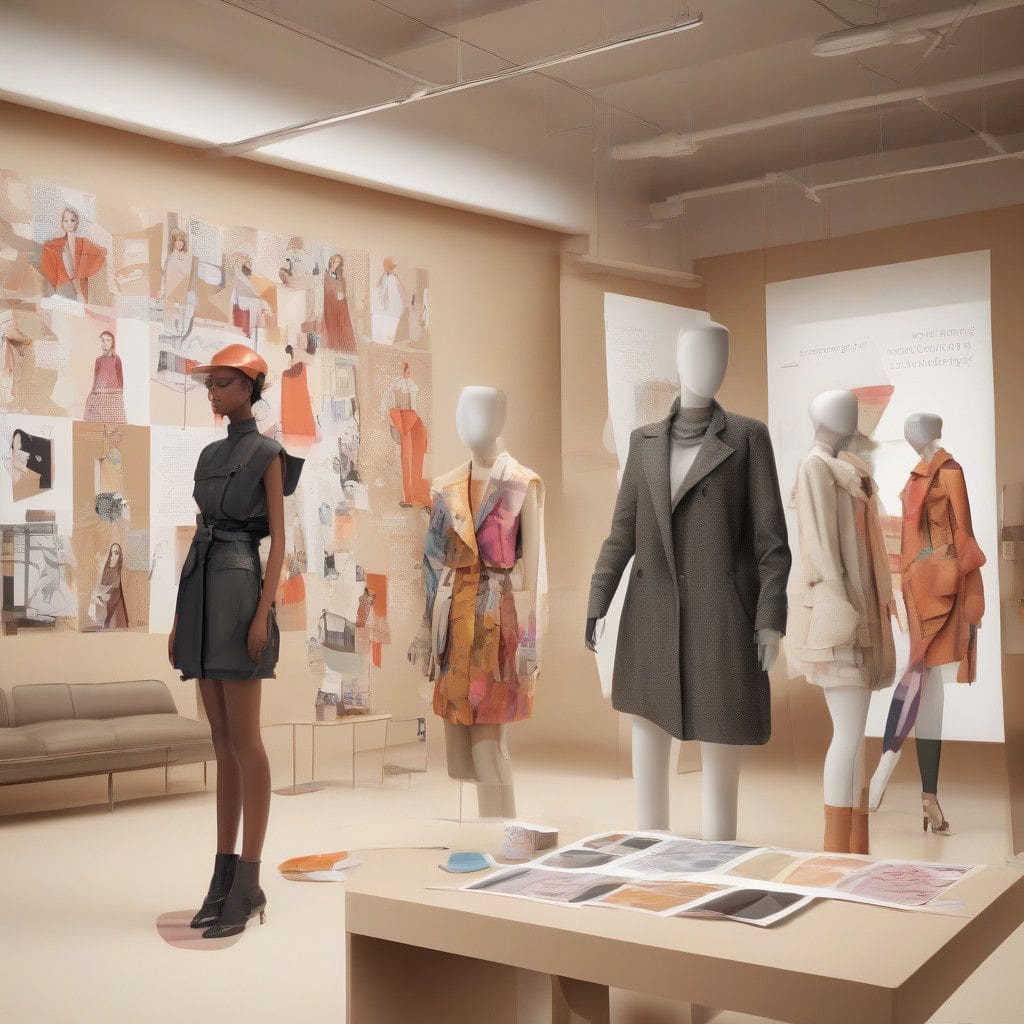In the highly competitive fashion industry, keeping abreast of current trends and market movements is essential for fashion designers striving to position themselves effectively in this dynamic landscape. This month, an analysis of key industry insights has come forth, providing designers with guidance on navigating their careers better and making informed decisions.
1. New York Fashion Week Isn’t Dead
Despite past criticisms about its decline, recent events suggest that New York Fashion Week is far from over. This year’s presentations featured significant moments that showcased the resilience and adaptability of the American fashion market. Ralph Lauren’s extravagant equestrian showcase in Bridgehampton, complete with a recreation of his popular Polo Bar restaurant, exemplified the grandiosity of this year’s events. Similarly, unexpected performances, like Wu-Tang Clan on a Staten Island ferry, created a buzz and generated excitement. While challenges remain, such as major brands showing off-calendar or relocating to Paris, the vibrancy of New York Fashion Week is evident through marquee shows from established names like Off-White and Alaïa.
2. Chanel Owners and L’Oréal Heir Investing in The Row
A noteworthy trend in the industry is the influx of investment into luxury brands that demonstrate a strong potential for growth. The Wertheimer brothers, owners of Chanel, along with L’Oréal heir Francoise Bettencourt Meyers, have made strategic investments in The Row, founded by Mary-Kate and Ashley Olsen. Valued at approximately $1 billion, this investment reaffirms the label’s reputation in the ‘quiet luxury’ market. With offerings like the Margaux handbag priced around $7,000, The Row illustrates the desirability of high-end craftsmanship in today’s market.
3. Givenchy Names Sarah Burton Its New Designer
Givenchy’s search for a new creative director has concluded with Sarah Burton at the helm. She takes over amid a backdrop of varied design directions, from Riccardo Tisci’s urban aesthetic to Clare Waight Keller’s mid-century elegance. Burton’s extensive experience at Alexander McQueen places her in an excellent position to redefine Givenchy’s identity yet again. The luxury fashion house, which has struggled to maintain its brand vision, is hopeful that Burton’s fresh perspective will set a new course that resonates with both contemporary and classic ideals.
4. Can Off-White Get Back on Track?
After a tumultuous period following founder Virgil Abloh’s death in 2021, Off-White has initiated a comeback with a debut at New York Fashion Week. Their recent show emphasized a narrative of global traveling, reflecting Abloh’s roots and heritage. Despite facing challenges such as a shift toward high-priced products that alienated some of its customer base, the brand aims to recalibrate its strategy under CEO Cristiano Fagnani’s guidance, emphasizing accessibility without sacrificing quality.
5. After the ‘Toryssance’: Tory Burch’s Balancing Act
Tory Burch has strategically shifted her brand identity from a bohemian-inspired aesthetic to a more modern, sophisticated approach over the past few seasons. The Spring/Summer 2025 collection showcased softer silhouettes while maintaining elevated designs, illustrating the brand’s evolution. This transition comes after critical acclaim and recognition from major publications, signaling to the industry that a refreshed vision can reinvigorate a brand.
6. Hodakova Takes Home Top Honours at the 2024 LVMH Prize
Emerging designers must continually find ways to innovate and connect with their audience. Ellen Hodakova Larsson’s label, Hodakova, has gained recognition by blending sustainability with desirability—crucial elements in today’s fashion landscape. Winning the prestigious LVMH Prize, funded with €400,000 will enable Hodakova to expand her upcycling business model effectively, emphasizing the importance of sustainable practices in fashion.
7. Why H&M and Inditex Are Betting on Lab-Grown Cotton
With rising concerns over environmental sustainability, traditional cotton production methods pose significant challenges in terms of resource use and ethical production. In response, companies like Galy are pioneering lab-grown cotton — a more sustainable alternative that dramatically reduces water and land use. This emerging technology not only addresses environmental concerns but also holds financial promise, as major retailers like H&M and Inditex have invested significantly.
8. Milan Proposes Supply-Chain Database Amid Sweatshops Probe
The final insight highlights a critical issue within the fashion sector: labor exploitation. Following scandals linking prominent luxury brands like Dior and Armani to sweatshops, Milan is taking proactive steps towards transparency with a proposed supply-chain database. This initiative aims to hold brands accountable and prevent future violations, showcasing an evolving industry focused on ethical standards.
These insights reflect the ever-changing landscape of fashion, underscoring the necessity for designers to stay informed, adapt to trends, and incorporate sustainable practices into their work. By doing so, emerging and established designers alike can navigate the complexities of the fashion world and cultivate careers that align with modern consumer values.












